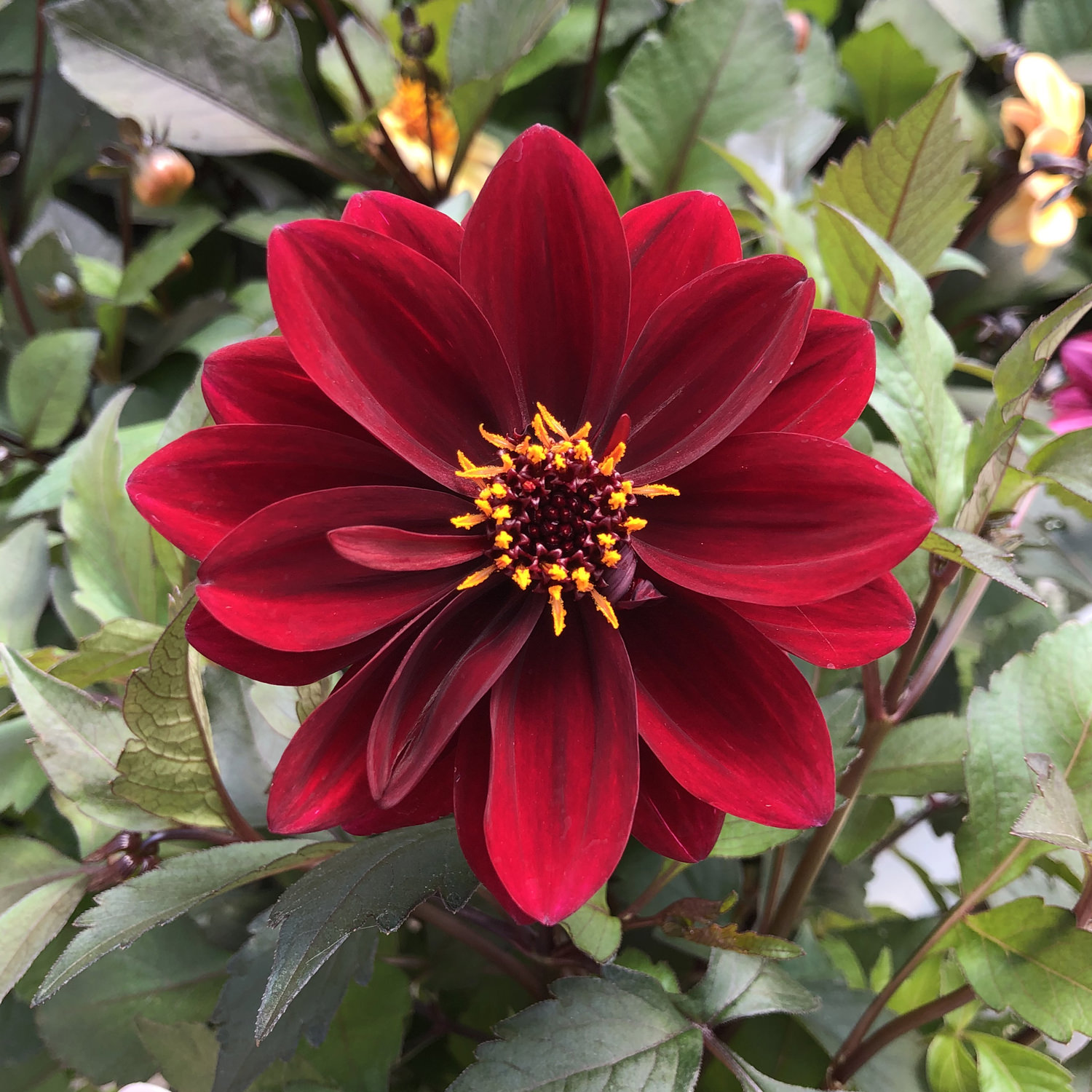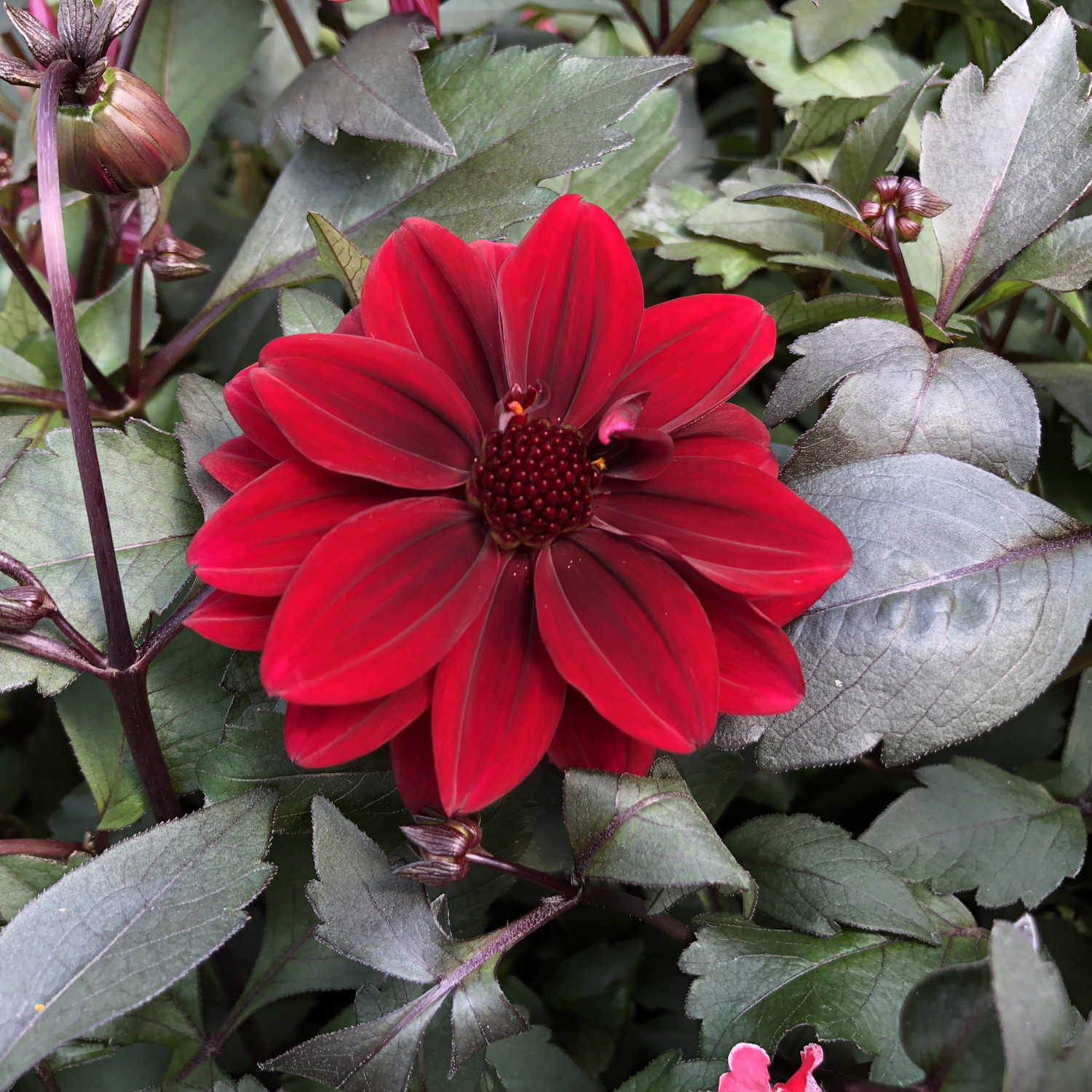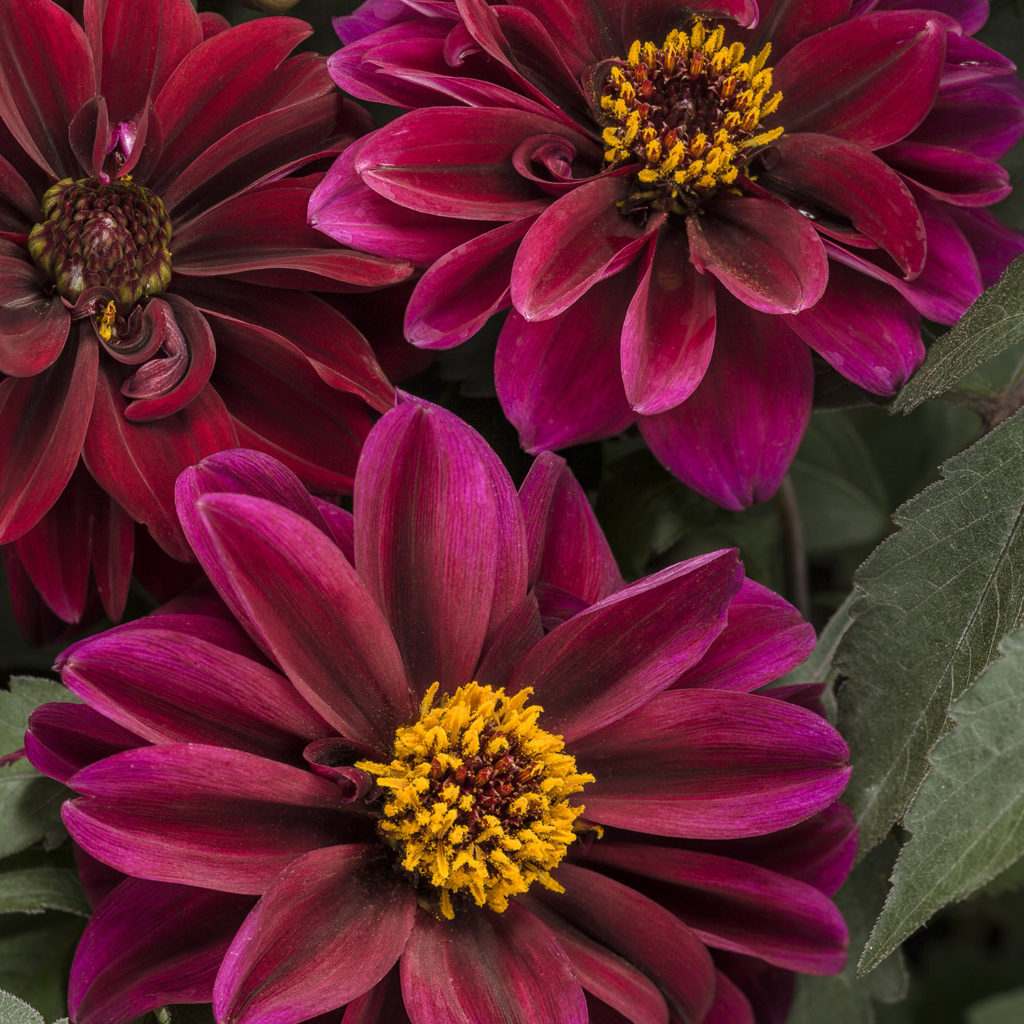Unveiling The Crimson Dahlia: Your Guide To Growing Stunning Blooms
Table of Contents
- The Allure of the Crimson Dahlia
- Understanding the Dahlia Family Tree
- Dahlia Culture: More Like Tomatoes Than You Think
- Planting Your Crimson Dahlia Tubers
- Nurturing Your Crimson Dahlia Through the Season
- Propagating and Expanding Your Crimson Dahlia Collection
- Winterizing Your Crimson Dahlias: Storage Secrets
- Exploring the Spectrum: Types of Dahlias
- Conclusion: The Crimson Dahlia – A Summer Symphony
Step into almost any vibrant summer garden, and your gaze will inevitably be drawn to the majestic dahlia. Among its kaleidoscope of colors, the dahlia crimson stands out with an undeniable intensity, a deep, rich hue that commands attention and adds a touch of dramatic elegance to any landscape. These stunning blooms are not just a feast for the eyes; they represent the pinnacle of summer gardening, promising a continuous display of bold color from midsummer until the first frost.
If you've ever dreamt of cultivating a garden that truly pops with life and vigor, embracing the dahlia crimson is an excellent starting point. This comprehensive guide will walk you through everything you need to know about growing these spectacular flowers, from understanding their unique needs to ensuring they thrive and return year after year. Prepare to unlock the secrets to cultivating your own breathtaking crimson display.
The Allure of the Crimson Dahlia
There's something uniquely captivating about the color crimson in the garden. It's not just red; it's a deep, luxurious, almost velvety shade that evokes passion and richness. When applied to the intricate petals of a dahlia, the effect is simply mesmerizing. The dahlia crimson can range from a fiery scarlet to a deep, brooding maroon, each variation offering its own distinct personality. Whether it's a formal dinner plate dahlia with petals the size of your hand, or a charming pompon dahlia with tightly rolled petals, the crimson hue elevates its beauty to another level.
These flowers are not merely ornamental; they are conversation starters, focal points, and the backbone of many a stunning floral arrangement. Their bold presence ensures that summer wouldn't quite be summer without them. Bursting forth from humble dahlia tubers, these flowers bring an unparalleled vibrancy to garden beds, borders, and even make stunning additions to pots and containers, proving their versatility in various garden settings.
Understanding the Dahlia Family Tree
Before diving into the specifics of cultivation, it's helpful to understand where dahlias fit into the botanical world. Dahlias are members of the Asteraceae (synonym name, Compositae) family of dicotyledonous plants. This is a vast and incredibly diverse family, and its relatives include some of the most beloved and recognizable flowers in our gardens: the sunflower, daisy, chrysanthemum, and zinnia. This lineage gives us clues about their robust nature and their tendency to produce prolific blooms, much like their sun-loving cousins.
Knowing their botanical background helps us appreciate their resilience and adaptability. Like many members of the Asteraceae family, dahlias are known for their composite flower heads, which are actually made up of many tiny individual florets. This intricate structure contributes to the rich variety of their flower colors, shapes, and sizes, making them one of the most diverse genera in the plant kingdom.
Dahlia Culture: More Like Tomatoes Than You Think
For many aspiring dahlia growers, the prospect can seem daunting. However, horticultural experts often share a reassuring secret: in many respects, "dahlia culture" is strikingly similar to "tomato culture." If you can successfully grow tomatoes in your garden, you already possess many of the fundamental skills needed to cultivate magnificent dahlias, including the vibrant dahlia crimson.
Both plants thrive in full sun, require well-draining soil, benefit from consistent moisture, and appreciate fertile ground. They are also both warm-season crops that are sensitive to frost and are typically planted after the danger of freezing temperatures has passed. Just as you might stake your tomato plants for support as they grow tall and heavy with fruit, dahlias often need similar support to bear the weight of their abundant, often large, blooms. This analogy simplifies the learning curve, making dahlia cultivation accessible to a wider range of gardeners.
Planting Your Crimson Dahlia Tubers
The journey to enjoying spectacular dahlia crimson blooms begins with planting the tubers correctly. Unlike many other summer bloomers that are winter hardy, dahlias are not, especially in cold climates. This means they burst forth from dahlia tubers each spring, requiring careful handling and proper planting techniques to ensure a strong start.
Choosing the Right Spot
Dahlias are sun worshippers. They need a minimum of 6-8 hours of direct sunlight per day to produce their best blooms. A spot with morning sun and some afternoon shade can be beneficial in extremely hot climates to prevent scorching, but generally, more sun equals more flowers. Good air circulation is also crucial to prevent fungal diseases, so avoid planting them in overly crowded areas.
Consider the mature size of the dahlia variety you are planting. Some can grow quite tall, reaching 4-5 feet or more, while others remain compact. Plan your spacing accordingly, allowing enough room for growth and air movement between plants.
Preparing the Soil
Well-draining soil is paramount for dahlias. They absolutely detest "wet feet," which can lead to tuber rot. If you have heavy clay soil, amend it generously with organic matter such as compost, well-rotted manure, or peat moss. This improves drainage and adds essential nutrients. A slightly acidic to neutral pH (6.5-7.0) is ideal.
Before planting, dig the soil to a depth of at least 12 inches, incorporating your amendments thoroughly. This creates a loose, fertile bed where the tubers can establish a strong root system without encountering compacted soil.
The Planting Process
Planting time is typically after the last frost date in your region, when the soil has warmed sufficiently, usually late April to early June depending on your climate. Here's a step-by-step guide:
- Dig the Hole: Dig a hole approximately 6-8 inches deep and wide enough to accommodate the tuber horizontally.
- Orient the Tuber: Lay the dahlia tuber horizontally in the hole with the "eye" (the small sprout or bud, often near the stem end) facing upwards. This eye is where the new stem will emerge.
- Add Support (Optional but Recommended): If your dahlia variety is known to grow tall, it's best to place a stake (a sturdy bamboo cane or metal rod) in the hole at planting time, about 2-3 inches from the tuber. This prevents damaging the tuber later when staking.
- Cover and Water: Gently cover the tuber with about 2-3 inches of soil. Do not water immediately after planting, especially if the soil is already moist. Overwatering at this stage can cause the tuber to rot before it has a chance to sprout. Wait until you see the first green shoots emerge, then begin regular watering.
- Spacing: Space tubers according to the mature size of the variety, typically 18-36 inches apart.
Patience is key after planting. It can take a few weeks for the shoots to emerge, but once they do, growth will be rapid.
Nurturing Your Crimson Dahlia Through the Season
Once your dahlia crimson plants are established, consistent care throughout the growing season is essential for a spectacular display. Experts share everything you need to know about how to grow dahlias, including how to plant, propagate, prune, and care for them.
- Watering: Once the plant has emerged and is actively growing, consistent watering is crucial, especially during dry spells. Dahlias prefer deep, infrequent watering over shallow, frequent watering. Aim for about 1 inch of water per week, either from rain or irrigation. Avoid overhead watering, which can encourage fungal diseases; instead, water at the base of the plant.
- Fertilizing: Dahlias are heavy feeders. Once the plant is about a foot tall, begin fertilizing with a balanced, low-nitrogen fertilizer (e.g., 5-10-10 or 10-20-20) every 3-4 weeks. Too much nitrogen will promote leafy growth at the expense of flowers.
- Pest and Disease Management: Keep an eye out for common pests like slugs, snails, aphids, and spider mites. Organic pest control methods are often effective. Good air circulation and proper watering techniques help prevent fungal diseases like powdery mildew.
Staking for Support
As mentioned earlier, staking is often non-negotiable for dahlias, especially the larger varieties or those producing heavy blooms. This support prevents stems from snapping in strong winds or under the weight of their magnificent flowers. If you didn't stake at planting time, insert a sturdy stake (bamboo, metal, or wood) about 6-12 inches from the main stem, being careful not to pierce the tuber. As the plant grows, loosely tie the main stem to the stake using soft ties or twine, allowing for future growth.
Pruning and Deadheading
Proper pruning and deadheading are key to maximizing your dahlia's bloom potential and maintaining a tidy plant.
- Pinching (Topping): When your dahlia plant has developed 3-4 sets of leaves, pinch off the top growing tip just above the third or fourth set of leaves. This encourages the plant to branch out, producing more stems and ultimately more flowers, rather than growing one tall, lanky stem.
- Disbudding: For larger, exhibition-quality blooms, you can practice disbudding. This involves removing the smaller side buds that form next to the main central bud on a stem. This directs all the plant's energy into that single, central bud, resulting in a much larger flower. For abundant garden display, this step is often skipped.
- Deadheading: Regularly remove spent flowers (deadhead) by cutting the stem back to a strong leaf or a side branch. This signals to the plant to produce more blooms instead of putting energy into seed production. Learn about cutting dahlias, growing them, and caring for them, and deadheading is a crucial part of this process.
Propagating and Expanding Your Crimson Dahlia Collection
One of the joys of growing dahlias is the ability to propagate them, expanding your collection of dahlia crimson plants without additional cost. The primary method of propagation is through tuber division, which is typically done in the spring before planting or in the fall after digging them up for winter storage.
Each dahlia tuber clump, when dug up, is a collection of individual tubers connected to a central "crown" or stem. For successful propagation, each divided tuber must have at least one "eye" (a small bud) attached to a piece of the crown. Without an eye, the tuber will not sprout. Using a sharp, clean knife, carefully separate the tubers, ensuring each piece has an eye and a healthy portion of the tuber. Dusting the cut surfaces with sulfur powder can help prevent rot.
Another method, though less common for home gardeners, is propagation through cuttings. This involves taking softwood cuttings from emerging shoots in early spring and rooting them in a sterile medium. This method allows you to produce many plants from a single tuber, but it requires more controlled conditions.
Winterizing Your Crimson Dahlias: Storage Secrets
As mentioned, dahlias, unlike many other summer bloomers, are not winter hardy in cold climates. To make them come back year after year, you must dig them up and store them over the winter. This process, while seemingly laborious, is incredibly rewarding and ensures your beloved dahlia crimson returns with renewed vigor each spring.
Here are the secrets to digging them up to store for winter:
- Wait for Frost: The best time to dig is after the first light frost has blackened the foliage. This allows the plant to send all its energy back into the tubers for storage.
- Cut Back Stems: Cut the main stems back to about 4-6 inches from the ground.
- Carefully Dig: Using a garden fork, carefully dig around the plant in a wide circle, far enough away from the stem to avoid damaging the tubers. Gently lift the entire clump from the soil.
- Clean and Cure: Gently remove excess soil from the tubers. You can rinse them lightly, but ensure they are thoroughly air-dried in a cool, dry, well-ventilated area for a few days to a week. This "curing" process helps toughen the skin and prevents rot during storage.
- Inspect and Divide (Optional): During curing or just before storage, inspect the tubers for any signs of damage or rot. Trim away any unhealthy parts. This is also the ideal time to divide the clumps if you wish to propagate them for more plants next year.
- Store Properly: Store tubers in a cool (40-50°F or 4-10°C), dark, and slightly humid place. Ideal storage mediums include peat moss, vermiculite, wood shavings, or sand. Place the tubers in cardboard boxes, paper bags, or plastic bins (with ventilation holes) layered with your chosen medium. Ensure the tubers do not touch each other directly if possible.
- Check Periodically: Throughout the winter, check your stored tubers periodically for signs of rot or shriveling. If they look too dry, mist them lightly. If you find rot, remove the affected tuber to prevent it from spreading.
By following these steps, you can successfully store tubers over the winter and ensure a spectacular return of your dahlias next season.
Exploring the Spectrum: Types of Dahlias
The world of dahlias is incredibly diverse, offering a rich variety of flower colors, shapes, and sizes. While our focus here is on the striking dahlia crimson, it's worth appreciating the sheer breadth of this genus. There are over 42 species of dahlias and tens of thousands of cultivars, classified into 12 main types based on their flower form. This diversity means there's a dahlia for every taste and garden style.
Some popular types include:
- Dinner Plate Dahlias: Known for their enormous blooms, often 8-12 inches across.
- Decorative Dahlias: Flat or slightly recurved petals, often very full and lush.
- Cactus Dahlias: Petals are rolled inward for more than two-thirds of their length, creating a spiky, quill-like appearance.
- Semi-Cactus Dahlias: Similar to cactus, but petals are rolled for less than two-thirds of their length.
- Ball and Pompon Dahlias: Perfectly spherical, compact blooms with tightly rolled petals. Pompons are smaller than balls.
- Waterlily Dahlias: Resemble waterlilies with broad, flat petals and a shallow form.
- Anemone Dahlias: Feature a central cushion of tubular florets surrounded by one or more rows of flat ray florets.
- Collarette Dahlias: Have a single outer ring of flat petals with a "collar" of shorter, often differently colored petals around the center.
- Single Dahlias: Simple flowers with one row of petals around a central disc.
- Mignon Dahlias: Similar to single dahlias but typically smaller and more compact.
- Orchid Dahlias: Unique, often star-shaped blooms with rolled or twisted petals.
- Peony-Flowered Dahlias: Open-centered blooms with multiple rows of petals, resembling peonies.
Each type offers a unique aesthetic, and within these classifications, you'll find countless varieties, including many stunning crimson cultivars, allowing you to discover 10 colorful, perhaps even more, ways to incorporate dahlias into your garden.
Conclusion: The Crimson Dahlia – A Summer Symphony
From the moment the dahlia tubers are nestled into the soil to the grand unveiling of their spectacular blooms, cultivating the dahlia crimson is a journey filled with anticipation and immense satisfaction. We've explored how similar "dahlia culture" is to "tomato culture," demystifying the process for many home gardeners. We've delved into their botanical roots within the Asteraceae family and outlined the essential steps for planting, nurturing, and caring for these midsummer bloomers throughout the season, including crucial practices like staking, pruning, and deadheading.
Furthermore, we've uncovered the secrets to expanding your collection through propagation and, most importantly, how to successfully dig them up and store them for winter, ensuring their vibrant return year after year. The rich variety of their flower colors, shapes, and sizes, particularly the bold and captivating crimson, truly makes dahlias an indispensable part of any summer garden.
Now that you're armed with this expert knowledge, it's time to bring the dramatic beauty of the dahlia crimson to your own landscape. Share your dahlia growing experiences in the comments below, or perhaps share this guide with a fellow gardening enthusiast. What are your favorite crimson dahlia varieties? We'd love to hear from you!

DAHLIGHTFUL® Crushed Crimson Dahlia - Garden Crossings

DAHLIGHTFUL® Crushed Crimson Dahlia - Garden Crossings

DAHLIGHTFUL® Crushed Crimson Dahlia